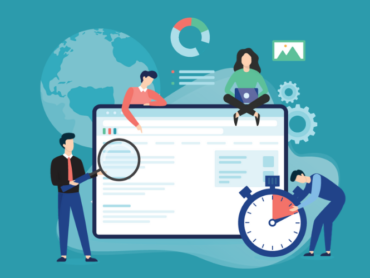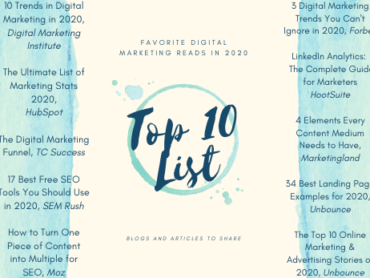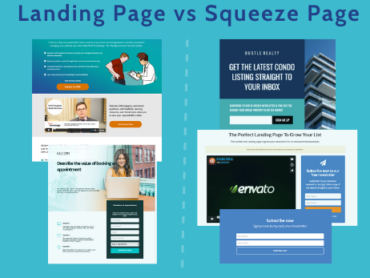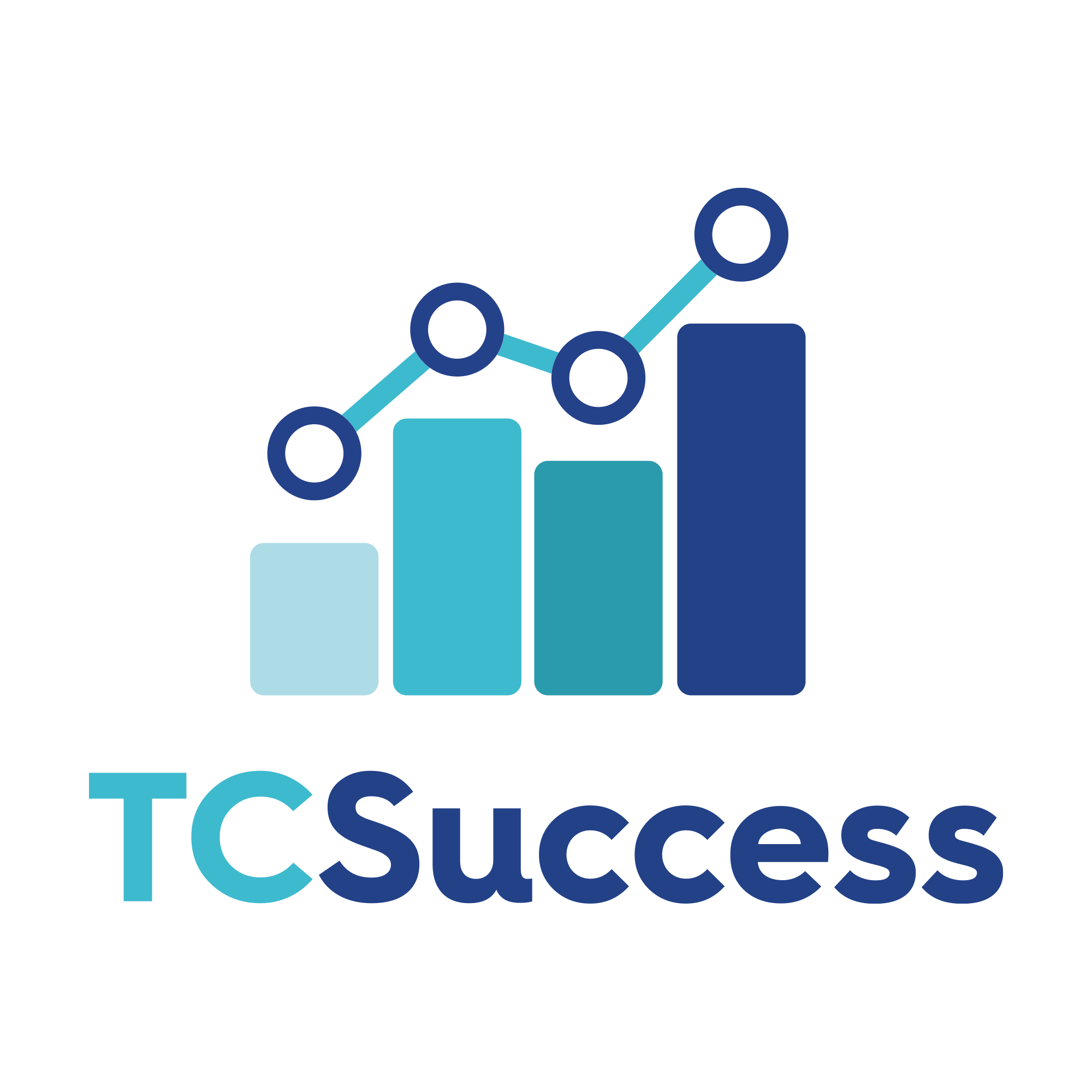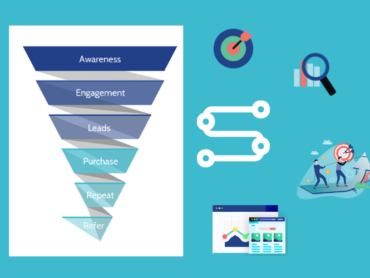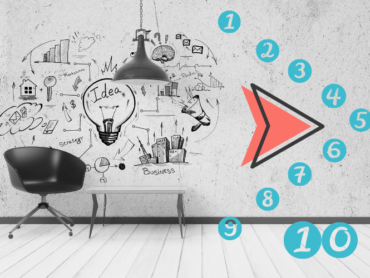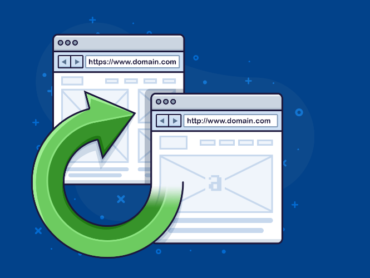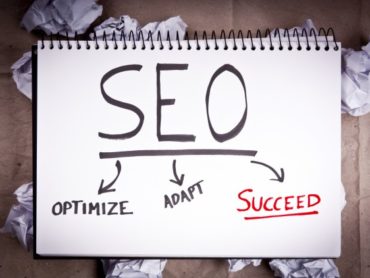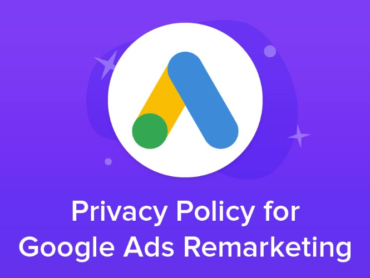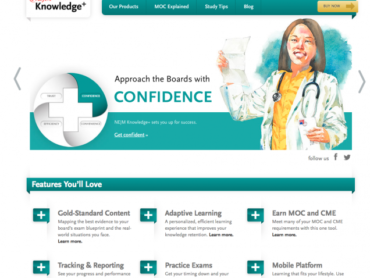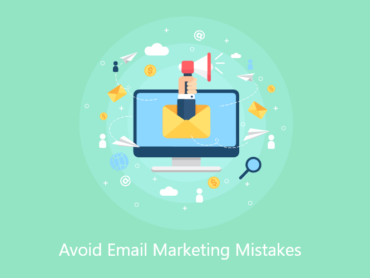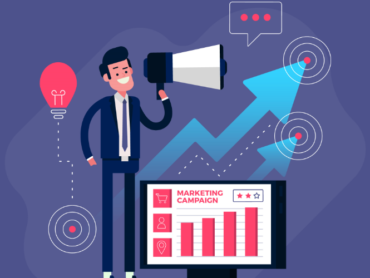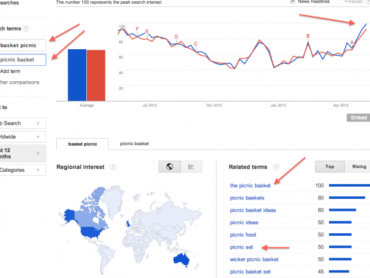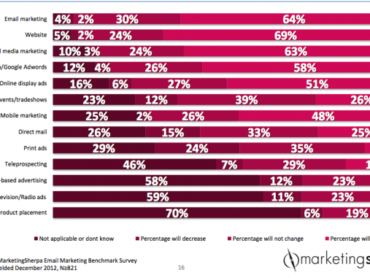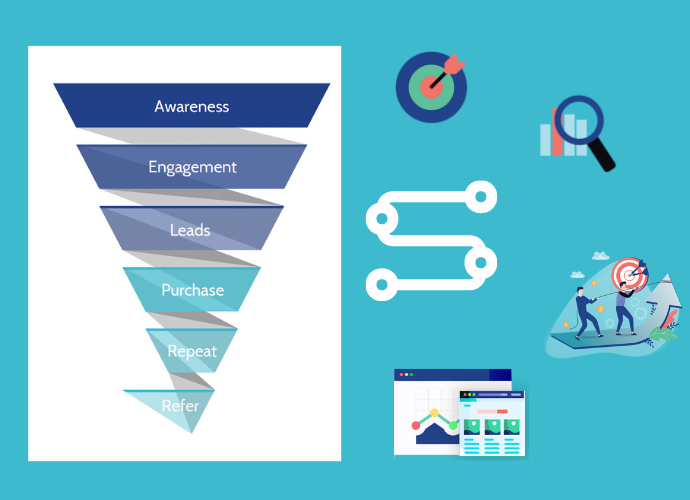
The Digital Marketing Funnel
Customer Behavior and Involvement Within the Digital Marketing Funnel
Did your last multi-channel marketing strategy achieve the return on investment you expected? If it fell short, you may want to examine your Digital Marketing Funnel, a key planning tool for implementing successful, cost-efficient and high ROI multi-channel marketing strategies.
While you may be familiar with the digital marketing funnel, some additional concepts are worth examining further. As a frame of reference, TC Success created the Digital Marketing Funnel graphic below to illustrate the customer journey through the dynamics of value and volume, assigning actionable KPIs to help you measure and manage each stage.
Each funnel stage is important and plays a unique role in creating an efficient and productive customer journey. Executing the customer journey by strategically applying the stages correctly will produce the highest efficiency of spend (ROI) and the highest production of sales (revenue).
The graphic breaks down each funnel stage into layers of behavior that customers experience as their level of involvement increases. These additional layers acknowledge that, although the funnel goes in one direction (down), the customer journey does not always follow the same linear path. In fact, customers can be at multiple stages at the same time and may speed up or slow down at any stage. Understanding how the dynamic customer journey interacts with the vertical direction of the digital marketing funnel provides insights and strategies that will help you craft campaigns, messages and offers that resonate with customers at all levels.
Let’s look at the funnel and then we’ll break it down.
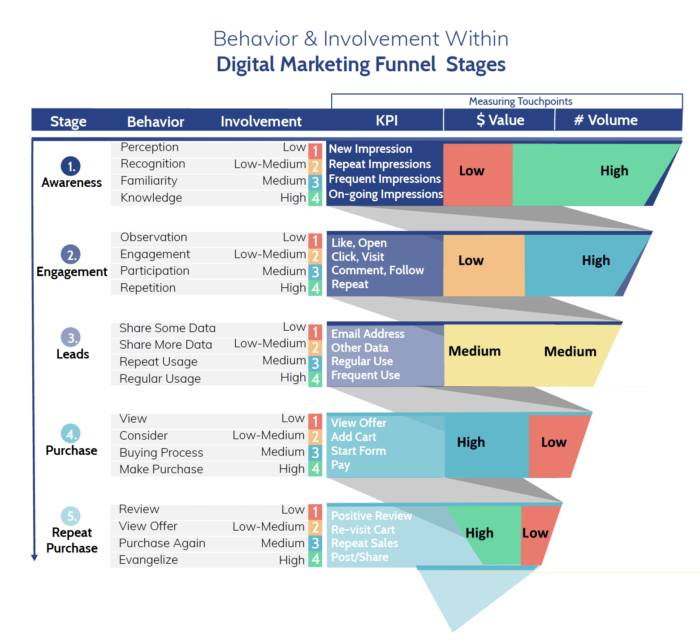
Measuring Customer Touchpoints
Let’s start with the right side > measuring customer touchpoints. Each stage of the digital marketing funnel has an associated touchpoint, which represents the intersection between your brand and your customer. While this graphic uses the term touchpoint generically, your organization will have its own specifically defined and measured touchpoints along the customer journey.
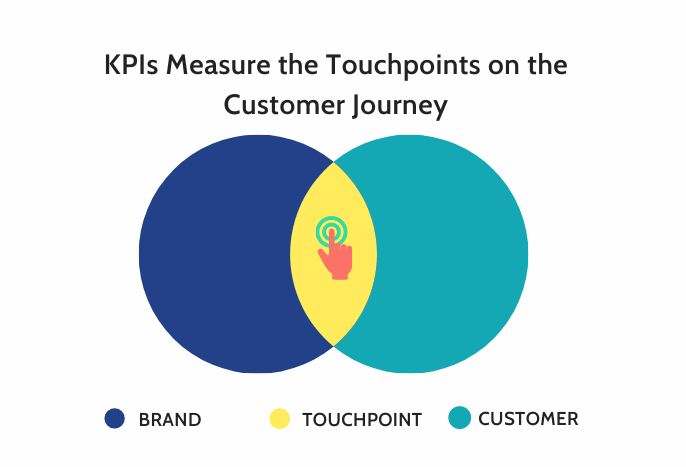
The TC Success Digital Marketing Funnel offers three ways to think about and measure customer touchpoints: KPIs, Value and Volume.
- The KPI column indicates typical performance-based touchpoints at each stage of the digital marketing funnel.
- The $Value column illustrates the relative monetary value of an individual touchpoint at any stage of the funnel.
- The #Volume column shows the relative number of touchpoints at each stage of the funnel.
Touchpoints at the top of the funnel (such as reach impressions) are relatively inexpensive, so you can purchase a higher volume for the same amount of marketing dollars compared with touchpoints further down the funnels such clicks, leads and sales. But at the same time, the customer’s rate of interaction with these touchpoints is lower. The touchpoints are far less likely to convert directly into revenue because the customer is at the farthest step away from purchase. That’s why these touchpoints are often used for creating brand awareness or introducing products. As you move further down the funnel, the number of touchpoints decreases and the value (or return on ad spend, ROAS) of each touchpoint increases as non-engaged buyers fall out of the pool, reducing its volume. This is the natural result of your audience becoming increasingly qualified (more likely to to purchase) as you weed out those that are less likely to convert.
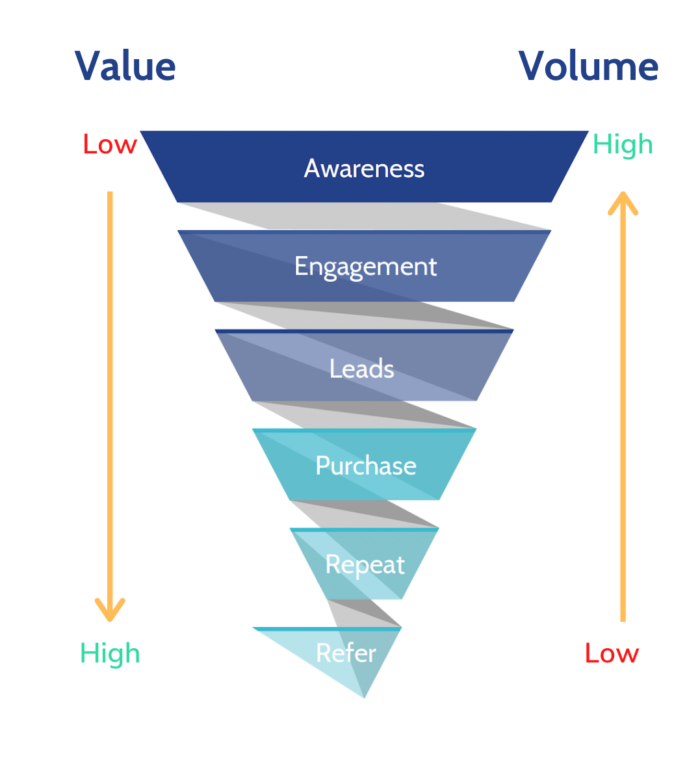
Some organizations are reluctant to allocate marketing spend on top-of-the-funnel activity since results are not as immediately measurable as profitable. However, planning, executing and investing in strategic campaigns at each level ensures that you have the greatest volume of qualified users at the bottom stages where every dollar spent has a high yield.
This is one reason why companies with well-established brands usually have higher valuations. The more positive brand awareness you have, the easier it is to attract, engage and convert users, moving them more quickly through the customer journey at a lower marketing investment per customer. Newer brands and products have to invest more dollars creating awareness at the top of the digital marketing funnel where spend is less efficient. The value of companies and products grows as awareness in the market increases (as long as it is positive).
Targeting and Conversion strategies increase the ROAS efficiency of your digital marketing funnel.
Strategically targeting your audience takes research and planning but improves spending efficiency because you increase the likelihood of customer response and movement to the next level.
Conversion rate also impacts funnel efficiency and requires close attention to every detail of layout, copy, design, and offers. This stage requires an investment, which when made wisely, pays off in the profitability of the campaign. Making further improvement by testing and applying continuous improvement will further optimize your funnel digital marketing funnel.
For example, when you launch your campaigns, you ideally will implement A/B or multivariate testing to copy, headlines, images and layout so that improvement to your conversion is continuous.
The key to successfully optimizing the customer journey is applying a smart and strategic balance of investment at each stage, appropriate for your brand and products. Too much activity or spend at any one stage, at the cost of another, will disrupt the optimal balance of attracting new users and moving them through the customer journey.
Levels of Customer Involvement Within the Stages of the Digital Marketing Funnel
Each of the five stages within the Digital Marketing Funnel has a mini-customer journey within it, as indicated in the Behavior and Involvement columns of the graphic. Customers enter each of the five stages at the lowest level of involvement and increase their involvement as they move through the stage. Understanding these subtle differences in involvement will help you apply tactics, messages, offers and other elements of your campaign appropriately at each stage. Just like in any relationship, you don’t want to treat everyone the same, move too quickly or assume too much or you may turn customers off.
Let’s look at Marketing Funnel Stages one by one.
Marketing Funnel Stage 1 – Awareness

As potential customers enter the first stage they are unaware of your company, brand or offer. In other words, it is a first impression. Touchpoints at this stage can be very light and brief such as scrolling by an ad or hearing a sponsored message on a podcast. At this stage, you are planting a seed to help customers form a perception. The next time they encounter you, they move to recognition. There is a vague sense of having heard your name or message before. Involvement, even at a subconscious level, is building. With time, even qualified audience members will solidify awareness as they encounter your brand again and again journeying through the funnel stages. The marketing you do at this stage should keep all of these customer journey scenarios in mind: those who have never heard of you, those who are becoming familiar and those who have deep knowledge of your brand. Keeping touchpoints fresh and updated while maintaining a consistent brand voice and message is a good way to keep both new and regular customers feeling positive and interested in your brand.
Marketing Funnel Stage 2 – Engagement

As they enter the engagement stage, customers have moved from being passive to slightly more involved: You have caught their attention and they begin to watch, notice and observe touchpoints that would not have before. As they observe, they may begin to feel an affiliation with your brand, start to build trust in your brand, and may start to engage and participate with your brand via comments or shares. If those interactions are satisfying, they may connect fully with your brand community by becoming followers, site visitors and loyal community members.
Marketing Funnel Stage 3 – Leads

Stage three is where the higher level of involvement and the value proposition converge strongly enough for a customer to provide you with their email address. The better job you do at the awareness and engagement stages, by making your brand familiar, trustworthy and relevant, the higher the lead conversion rate and the better the quality of the leads. Not all leads are equal. A lead might be far away from a level of involvement that moves them to the purchase stage. Nurturing leads is sometimes a long-play strategy as you may have a qualified lead (they need or will need your product) but the timing is off. However, if you do a good job of providing them value via your content, tools, events and other lead engagement strategies, you will likely be at the top of their list when budgets increase, job titles shift, or RFPs go out.
Managing the Leads stage depends on factors such as the length of the sales cycle, qualifying for a sales pipeline, or your line of business. An email address alone (share some data) is not as valuable as a lead with additional data (share more data). The goal is to become more valuable to your leads and increase their level of involvement so that they turn to you as a regular and increasingly frequent resource and are ready for the right time and offer to move to the purchase stage.
Marketing Funnel Stage 4 – Purchase

The Purchase stage requires separate design and measurement for each level of involvement to avoid high bounce rates (when clicks result in an immediate exit after viewing the offer). To improve purchase conversion rates, marketers should pre-qualify visitors (done at higher levels of the funnel) and create a secure, engaging and frictionless purchase process from view> to consider> to start form> to purchase. When creating and later analyzing campaigns, consider and measure the behavior at each level of the purchase process. The customer must move through each step before you achieve revenue. Understanding this will help you see and understand any friction points so that you can solve them and make your campaigns as efficient as possible. The volume of customers that reach this point of the funnel gets smaller and smaller, so treat each one like you worked really hard to get it (which you did!).
Be sure to include additional metrics beyond number and amount of purchases when evaluating your campaigns. Instead, also monitor conversion rates at each step of the transaction to identify challenges and opportunities at each juncture of the multi-step transaction. For example, you may find customers adding items to their cart, but not completing the form. This insight may help you identify page issues that need to be addressed. Without that added level of scrutiny, it may be difficult to identify the root cause of a particular failure point.
Stage 5 – Repeat Purchase & Evangelize

The long-term revenue associated with each customer is the most efficient and valuable asset your company has. Formulas for this vary by company. Some companies with profitable repeat purchases even acquire a customer at a loss. Other companies make only one sale, so all profit comes from that transaction. But even if your product does not have a renewal or repeat sales cycle, your customer is still your best source of proof and new business referrals. To move customers through the levels of involvement at this stage of the digital marketing funnel, it’s all about a great customer experience with the product with excellent support and follow up. Remember these valuable customers are also involved with you via all of the earlier stages and keeping them happy, engaged, and purchasing turns them into evangelists for your product.
Conclusion
We hope this insight into the Digital Marketing Funnel helps you better understand its importance in implementing a successful, cost-efficient multi-channel strategy that improves your ROI. Read more about What We Do to learn how TC Success turns strategy into actionable digital marketing.

